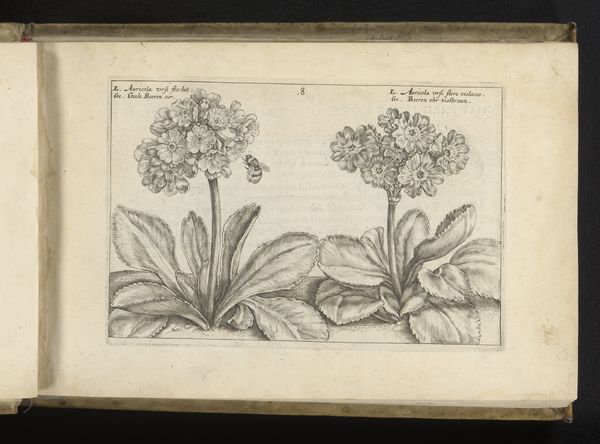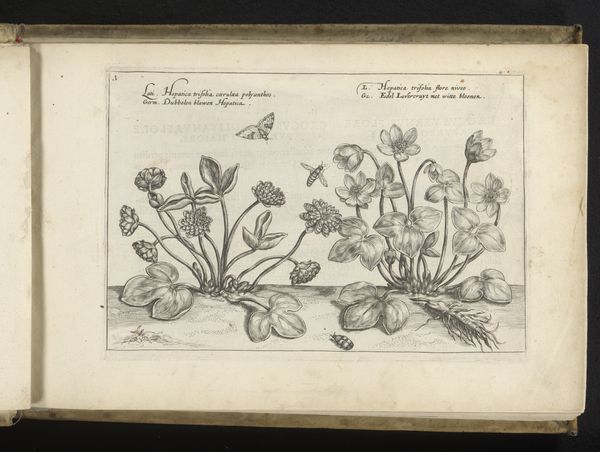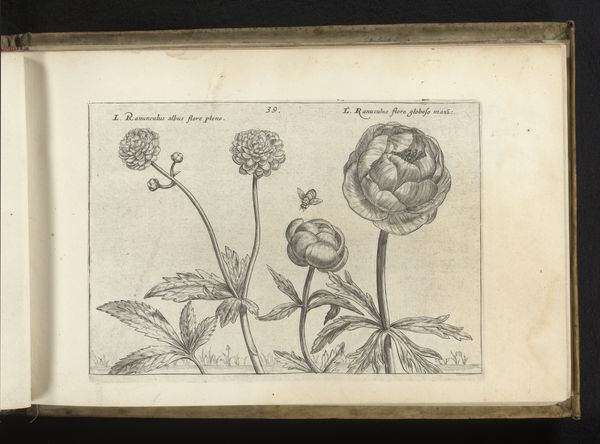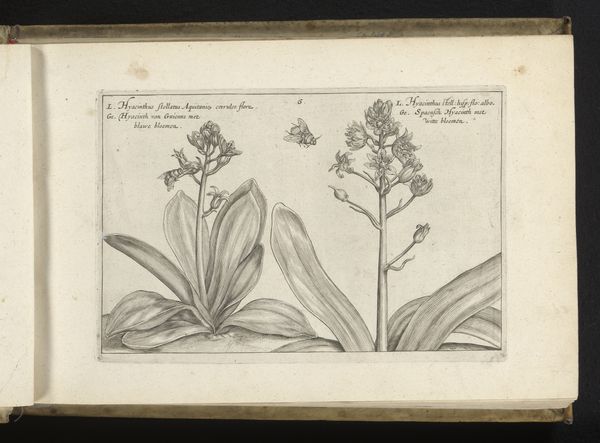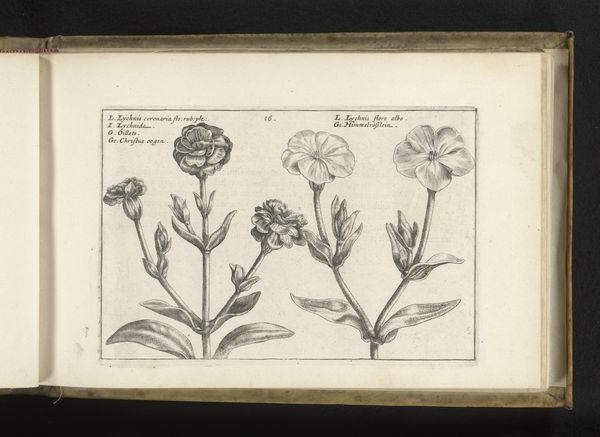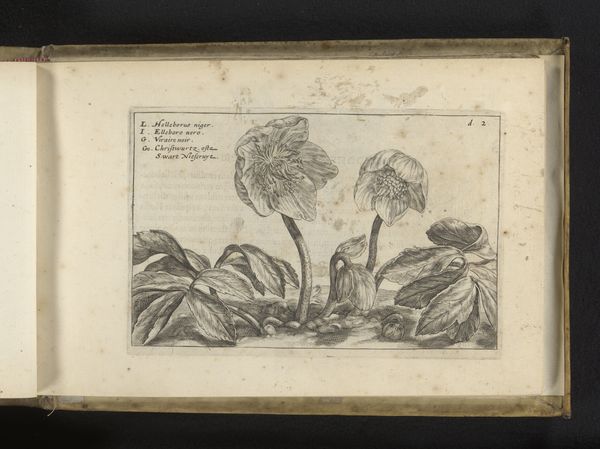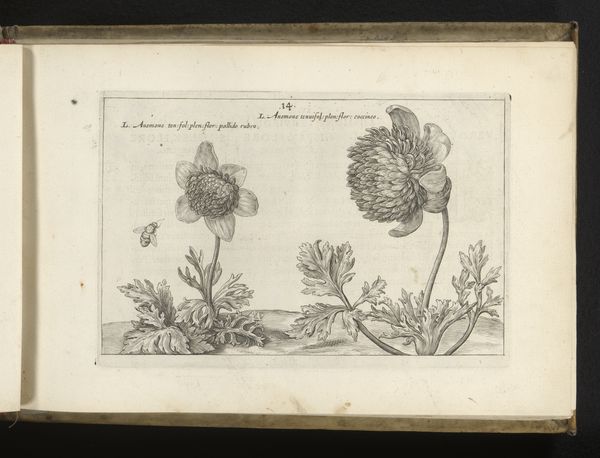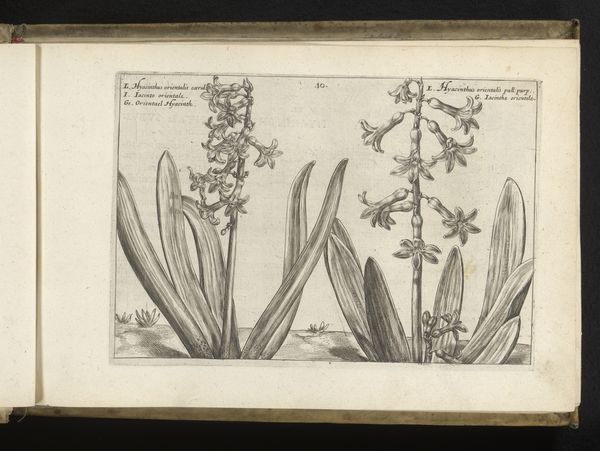
drawing, print, paper, ink, engraving
#
drawing
#
aged paper
# print
#
sketch book
#
flower
#
paper
#
personal sketchbook
#
ink
#
journal
#
pen-ink sketch
#
pen and pencil
#
pen work
#
sketchbook drawing
#
storyboard and sketchbook work
#
northern-renaissance
#
sketchbook art
#
engraving
Dimensions: height 135 mm, width 206 mm
Copyright: Rijks Museum: Open Domain
Curator: This engraving from 1617 by Crispijn van de Passe the Younger, currently residing at the Rijksmuseum, is titled "Gulden sleutelbloem en een variant," depicting two varieties of the primrose. It seems to be an illustration from a botanical study. Editor: My initial impression is one of delicate observation. The image exudes a calm stillness, despite the intricate detail of the engraving, down to the veins in each individual leaf. Curator: Absolutely. Van de Passe’s choice of engraving as a medium is fascinating. Consider the labor-intensive process—the meticulous carving into the metal plate, the press, the specific inks, and paper used in producing such a detailed botanical study at this time. Each print made the work of botanists more broadly available for study. Editor: The primrose itself holds significance, too. In the language of flowers, the primrose symbolizes youth, new beginnings, and “I can’t live without you.” It appears in myth and folklore connected to fairies and portals. Note how one primrose variety is more developed in bloom; do you think that variation intentionally suggests the unfolding stages of life or knowledge? Curator: Interesting, and if so, consider that the symbolism itself becomes a commodity as botanical knowledge expands and finds its place in the marketplace and domestic life, it may well represent value through increased availability in home gardens of the era. Editor: True. And there’s something quietly revolutionary in rendering such everyday plants with such care. What elevates these humble plants to subjects of artistic study and meticulous reproduction? It hints at a shifting worldview where close observation of nature unlocks greater understanding. Curator: Right, and that shift ties directly into the availability of knowledge and production: as the printing press democratizes information, both scientific and symbolic understanding find new markets. Editor: It enriches how we interpret the piece knowing this wider context of production and process! Curator: Indeed. The cultural weight carried in such unassuming things can be considerable.
Comments
No comments
Be the first to comment and join the conversation on the ultimate creative platform.
